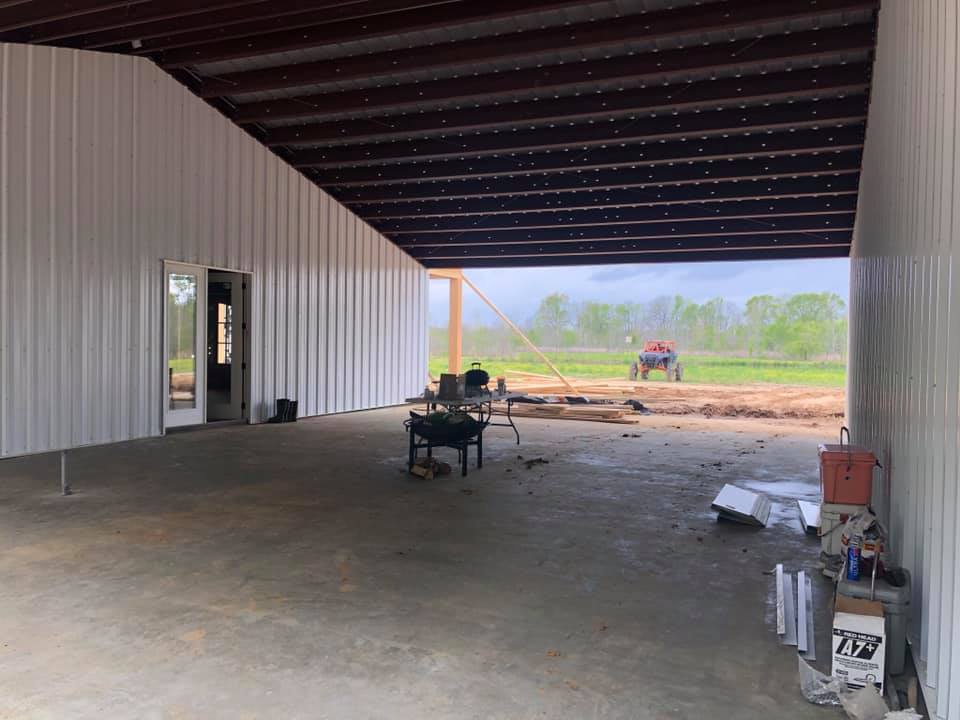If you’re considering building a barndominium, one of the most critical aspects to consider is the thickness of its interior walls. The interior walls of a barndominium are responsible for providing insulation and structural support. In this article, we will dive into the details of how thick the interior walls of a barndominium need to be to ensure a safe and comfortable living space. So, let’s get started!

How Thick Is the Interior Wall of a Barndominium?
If you’re looking to build a barndominium, one of the key considerations is the thickness of the interior walls. The thickness of the interior walls will impact the overall strength and durability of the structure, as well as its insulation properties. In this article, we’ll explore the factors that influence the thickness of interior walls in a barndominium and provide you with some useful information to help you make an informed decision.
Factors that Influence the Thickness of Interior Walls
There are several factors that influence the thickness of interior walls in a barndominium. These include:
1. Structural Integrity
The thickness of interior walls in a barndominium is largely determined by the structural integrity of the building. If the walls are not thick enough, they may not be able to support the weight of the roof and other structural elements. This can lead to structural damage and compromise the safety of the building.
2. Insulation Requirements
Another factor that influences the thickness of interior walls in a barndominium is insulation requirements. The thicker the walls, the better they are at insulating the building and keeping it warm in the winter and cool in the summer. This can help reduce energy costs and improve the overall comfort of the living space.
Recommended Thickness of Interior Walls
The recommended thickness of interior walls in a barndominium depends on several factors, including the size and weight of the building, the type of insulation used, and local building codes. In general, the thickness of interior walls in a barndominium should be at least 6 inches.
Benefits of Thick Interior Walls
There are several benefits to having thick interior walls in a barndominium. These include:
– Improved structural integrity and durability
– Better insulation properties
– Reduced energy costs
– Improved comfort and livability
VS Thin Interior Walls
Thin interior walls in a barndominium may be less expensive to build, but they come with several drawbacks, including:
– Reduced structural integrity and durability
– Poor insulation properties
– Higher energy costs
– Reduced comfort and livability
Conclusion
In summary, the thickness of interior walls in a barndominium is an important consideration that can impact the overall strength, durability, and energy efficiency of the building. While the recommended thickness is at least 6 inches, other factors such as insulation requirements and local building codes should also be taken into account. Ultimately, investing in thick interior walls can provide numerous benefits, including improved structural integrity, insulation, energy efficiency, and comfort.
Frequently Asked Questions
What are Barndominiums?
Barndominiums are steel-framed buildings that can be used for both residential and commercial purposes. They are gaining popularity due to their unique appearance and affordability.
These buildings are usually made from high-quality, low-maintenance materials that are durable and long-lasting. They can be customized to suit your specific needs and preferences.
What is the Purpose of Interior Walls in a Barndominium?
The interior walls in a barndominium serve several purposes. Firstly, they provide privacy and separation of different living areas, such as bedrooms, bathrooms, and living rooms.
Additionally, these walls help to insulate the building and reduce energy costs. They also provide a surface for hanging pictures, shelves, and other decorative items.
What Materials are Used for Interior Walls in a Barndominium?
The most common materials used for interior walls in a barndominium are drywall, wood paneling, and metal panels. Drywall is the most popular choice due to its affordability and ease of installation.
However, wood paneling and metal panels are also popular options, especially for those who want a more rustic or industrial look for their barndominium.
How Thick are Interior Walls in a Barndominium?
The thickness of interior walls in a barndominium can vary depending on the materials used and the specific requirements of the building. However, most interior walls are between 3 and 5 inches thick.
This thickness is sufficient for insulation and provides a sturdy surface for hanging decorations and other items.
Can Interior Walls in a Barndominium be Removed or Relocated?
Yes, interior walls in a barndominium can be removed or relocated if necessary. However, it is important to consult with a professional contractor to ensure that the building’s structural integrity is not compromised.
If you plan to make significant changes to the interior layout of your barndominium, it is recommended to work with a contractor who has experience with these types of buildings.
Interior framework of a barndominium
In conclusion, the thickness of the interior walls in a barndominium is an important consideration for homeowners and builders alike. While there is no one-size-fits-all answer, it is generally recommended to use at least 2×6 framing for the walls to ensure adequate support and insulation. However, some factors, such as local building codes and personal preferences, may require thicker or thinner walls.
It is crucial to work with a qualified builder who can help determine the appropriate wall thickness for your specific barndominium project. Additionally, choosing high-quality insulation materials can further enhance the energy efficiency and comfort of your home.
Ultimately, the interior wall thickness of a barndominium should be chosen based on a careful consideration of various factors, including the climate, local building codes, and personal preferences. With the right materials and expert guidance, you can create a comfortable, durable, and energy-efficient living space that meets your unique needs and preferences.
